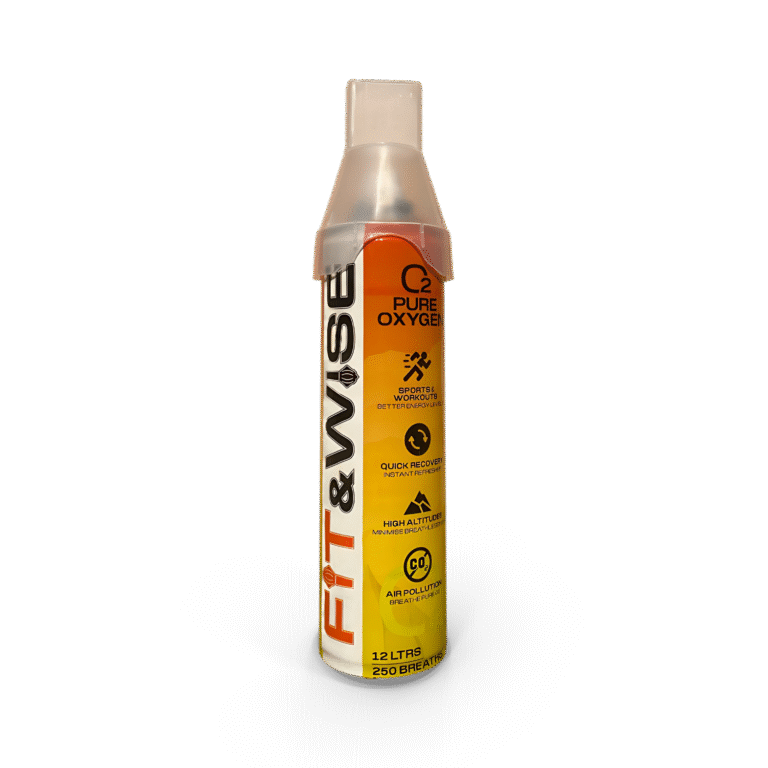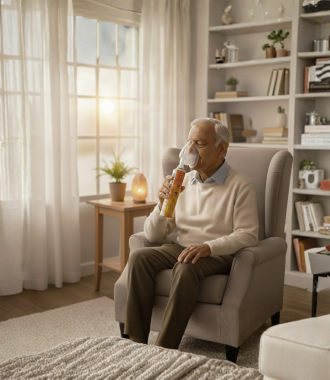Introduction: Understanding Oxygen Solutions
Oxygen is essential for life, and for individuals with respiratory conditions or those involved in high-performance activities, supplemental oxygen can be a game-changer. Two of the most popular forms of supplemental oxygen are portable oxygen cans and medical oxygen therapy. While both serve to increase oxygen intake, they are designed for different purposes and offer varying benefits. Understanding the differences between portable oxygen and oxygen therapy is key to choosing the right option for your needs.
What is Portable Oxygen?
Portable oxygen cans are lightweight, non-prescription products that provide a short burst of pure oxygen. These cans are typically used for recreational or fitness purposes, offering a quick and temporary oxygen boost. They are easily accessible, convenient to carry, and suitable for use in situations like high-altitude activities, post-workout recovery, or when you feel fatigued.
Key Features of Portable Oxygen Cans:

Convenience
Small and easy to carry, ideal for on-the-go use.

Non-Prescription
Available over the counter, no medical prescription required.

Temporary Use
Designed to offer quick bursts of oxygen, not intended for long-term use.

Recreational Use
Often marketed to athletes, high-altitude travelers, or anyone in need of a quick oxygen boost.

Get Your Portable Oxygen Cans
What is Oxygen Therapy?
Oxygen therapy, on the other hand, is a medical treatment prescribed by a healthcare professional for individuals with chronic respiratory issues. This therapy provides a steady supply of medical-grade oxygen to individuals whose bodies cannot get enough oxygen on their own. Common conditions requiring oxygen therapy include chronic obstructive pulmonary disease (COPD), severe asthma, pneumonia, and other lung-related diseases.
Key Features of Oxygen Therapy:
- Medical Treatment: Prescribed by doctors and regulated for patients with specific respiratory conditions.
- Long-Term Use: Often necessary for continuous use over extended periods.
- Higher Oxygen Concentration: Provides a controlled and consistent flow of medical-grade oxygen.
- Equipment: Delivered via oxygen tanks, concentrators, or liquid oxygen systems that are much larger than portable oxygen cans.
The Differences in Purpose and Usage
The primary difference between portable oxygen and oxygen therapy lies in their intended purpose and how they are used.
- Portable Oxygen for Temporary Boosts: Portable oxygen cans are primarily designed for short-term, non-medical use. They are often marketed to athletes who need a quick recovery boost after a strenuous workout or to travelers at high altitudes who experience low oxygen levels. These cans provide a temporary increase in oxygen to aid performance or recovery, but they are not suitable for treating serious medical conditions.
- Oxygen Therapy for Chronic Conditions: Oxygen therapy is a prescribed treatment used to manage long-term respiratory conditions. The goal is to ensure the patient receives adequate oxygen at all times to maintain normal body function. Oxygen therapy can be administered at home, in hospitals, or through portable devices that deliver a continuous or intermittent flow of oxygen.
Oxygen Delivery Systems: How They Differ
When comparing portable oxygen cans and oxygen therapy, it’s important to understand how each system delivers oxygen.
Portable Oxygen Can Delivery
- Comes in aerosol-like cans.
- Users typically hold the can close to their mouth and inhale as needed.
- Each inhalation delivers a small burst of pure oxygen.
Oxygen Therapy Delivery:
- Delivered via a nasal cannula, face mask, or specialized oxygen tank.
- Provides continuous or pulse flow, depending on the patient’s oxygen requirements.
- Oxygen therapy devices are either portable (though larger than oxygen cans) or stationary for at-home use.
Comparing Benefits: Portable Oxygen vs. Oxygen Therapy
Both portable oxygen and oxygen therapy offer unique benefits depending on the user’s needs.
Benefits of Portable Oxygen:
- Quick Access: Portable oxygen cans can provide immediate relief when you feel fatigued, short of breath, or need a quick recovery boost.
- Convenience: These cans are small, easy to carry, and do not require medical supervision or complex equipment.
- Ideal for Non-Medical Use: They are perfect for recreational users, athletes, or individuals engaging in high-altitude activities.
- Affordable: They are much cheaper and more accessible than oxygen therapy, available without a prescription.
Benefits of Oxygen Therapy:
- Life-Saving Treatment: For those with chronic respiratory conditions, oxygen therapy is a critical part of treatment and can significantly improve quality of life.
- Continuous Supply: Oxygen therapy provides a reliable and steady supply of oxygen that meets the patient’s specific medical needs.
- Long-Term Health Benefits: With proper oxygen therapy, patients can reduce complications related to low oxygen levels, such as organ damage or cognitive decline.
- Affordable: They are much cheaper and more accessible than oxygen therapy, available without a prescription.
When Should You Use Portable Oxygen vs. Oxygen Therapy?
Understanding when to use each type of oxygen delivery system is vital:
When to Use Portable Oxygen:
- During high-altitude activities like hiking or skiing.
- After an intense workout to speed up recovery and reduce breathlessness.
- In non-medical situations where you may need a quick oxygen boost.
When to Use Oxygen Therapy:
- If you have a diagnosed respiratory condition such as COPD, emphysema, or severe asthma.
- When prescribed by a doctor for long-term management of chronic respiratory issues.
- If you experience low blood oxygen levels (hypoxemia) that could affect organ function.
Safety Considerations
While portable oxygen cans are generally safe for most users, it’s important to use them responsibly. They should not be used as a substitute for medical care in individuals with serious respiratory conditions. Oxygen therapy, however, should always be managed under the guidance of a healthcare professional to ensure proper usage and to prevent complications.
Conclusion: Choosing the Right Oxygen Solution
Portable oxygen cans and oxygen therapy serve very different purposes. While portable oxygen cans are perfect for quick, on-the-go oxygen boosts, oxygen therapy is a vital medical treatment for those with chronic respiratory conditions. Understanding the differences between these two options will help you make an informed decision based on your needs. If you are unsure which option is right for you, consult with a healthcare provider to ensure you’re using oxygen safely and effectively.









